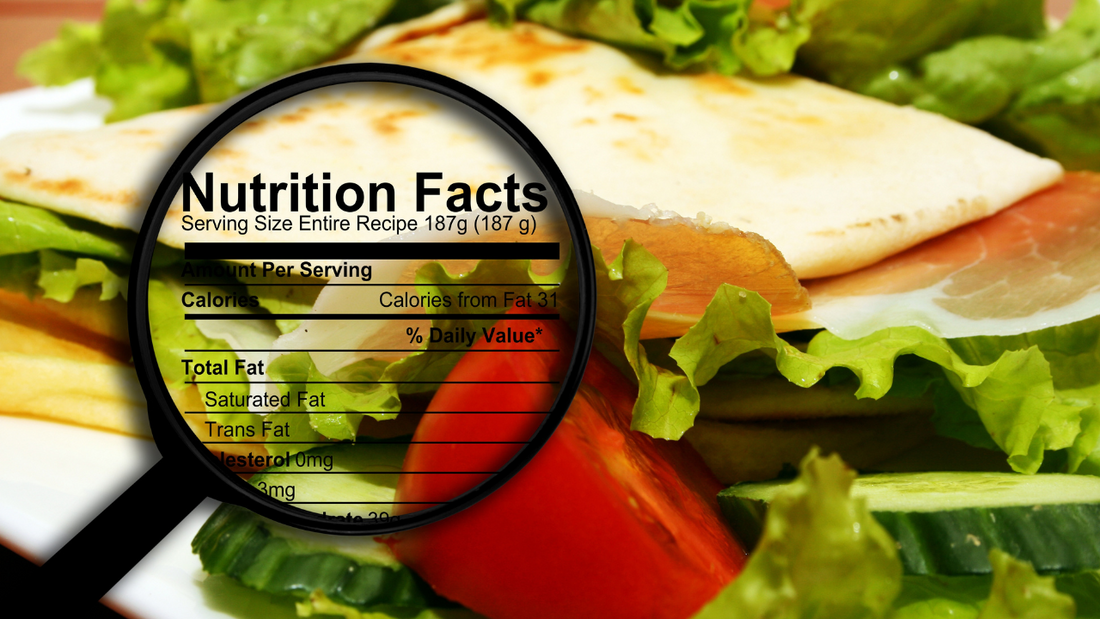
How to Read Food Labels: Understanding Organic Ingredients
Navigating the aisles of a grocery store can sometimes feel like decoding a puzzle, especially when you're surrounded by various products labeled "organic," "natural," and "non-GMO."
If you've ever found yourself wondering what these terms really mean and how to pick the healthiest option, you're not alone. This guide will help you understand food labels and identify truly organic products.
Let's take a journey through the world of food labels, breaking down the terminology and symbols, so you can make informed choices for you and your family.
What Does “Organic” Really Mean?
Before diving into labels, let's clarify what "organic" means in the context of food production. Organic food is grown and processed using farming methods that recycle resources, promote ecological balance, and conserve biodiversity. It avoids the use of most synthetic fertilizers, pesticides, and genetically modified organisms (GMOs).
- USDA Organic Certification: In the United States, the USDA has set strict standards for what qualifies as organic. To earn the USDA Organic seal, a product must contain at least 95% organically produced ingredients. The remaining 5% can only include non-organic ingredients if they are not commercially available as organic and are approved on the USDA's list.
- Difference from "Natural" and "Non-GMO": Unlike "organic," the term "natural" is not regulated and can mean different things depending on the product and manufacturer. "Non-GMO" means that the product does not contain genetically modified organisms, but it doesn’t necessarily mean it’s organic.
The Anatomy of a Food Label
Understanding a food label's structure can help you quickly identify the quality of the product.
- Primary Features: The front of the package often displays eye-catching terms like "organic" or "natural." While these can give a quick indication of the product's nature, the real information lies elsewhere.
- Ingredients List: This is where you’ll find the most accurate information. Ingredients are listed by weight, from highest to lowest. Organic ingredients will usually be marked with an asterisk (*) or noted as organic. Keep an eye out for items listed as “organic [ingredient],” which indicates that ingredient is certified organic.
- Nutrition Facts: Although the nutrition facts panel mainly provides information on calories, fats, and other nutrients, it's essential to check it for any unexpected additives or ingredients that may not be organic.
Understanding Organic Labels and Logos
Various labels and logos on food products can signify different levels of organic content.
- USDA Organic Seal: This green and white seal is the gold standard of organic certification. Products bearing this seal must meet stringent USDA requirements, ensuring they are at least 95% organic. If you see this seal, you can trust that the product adheres to high organic standards.
- Other Certifications: You might also see labels like "Certified Organic by [certifying agency]," which means that an independent organization has verified the organic claims. These can be credible but may not follow the exact standards of the USDA.
- Claims and Buzzwords: Phrases like "made with organic ingredients" mean that the product contains at least 70% organic ingredients. While these products aren't 100% organic, they are a better choice than those without any organic ingredients.
Deciphering Common Organic Terms
- 100% Organic: Products with this label contain only organic ingredients (excluding water and salt). They can also display the USDA Organic seal.
- Organic: These products must have at least 95% organic ingredients. The remaining 5% must be non-organic ingredients on the USDA’s approved list. They also qualify to display the USDA Organic seal.
- Made with Organic Ingredients: These products contain at least 70% organic ingredients. The specific organic ingredients must be listed on the packaging, but these products do not carry the USDA Organic seal.
- Non-Certified Organic Claims: Some products may use organic ingredients but aren't certified. They might label themselves as containing organic ingredients but won’t have the USDA Organic seal. It’s essential to read these labels carefully to understand what you're getting.
Hidden Ingredients to Watch Out For
Not all organic products are free from additives or processing. Here’s what to keep an eye on:
- Additives and Preservatives: Organic foods can still contain certain additives. Check for unfamiliar ingredients that may be natural but are still additives.
- Sugar and Sweeteners: Just because a product is organic doesn’t mean it’s healthy. Organic cookies or snacks may still contain high levels of sugar. Look for organic sweeteners and check the sugar content.
- Processed Organic Foods: Some organic foods are heavily processed. The closer a product is to its natural state, the better. Opt for whole, unprocessed organic foods when possible.
Tips for Choosing Truly Organic Products
- Read Beyond the Front Label: The front label is designed to catch your eye, but the truth is often in the fine print. Always check the ingredients list and look for certification seals.
- Know Your Certifying Agencies: Besides the USDA, other reputable agencies certify organic products. A few others you might see include Quality Assurance International (QAI), California Certified Organic Farmers (CCOF), and International Certification Services (ICS). When in doubt, run a quick Google search and check it out.
- Shop Local and Seasonal: Farmers' markets often offer fresh, organic produce. Seasonal shopping can also ensure you're getting the freshest and most nutritious options, often with fewer pesticides.
- Be Skeptical of “Natural” Claims: A product labeled “natural” isn’t necessarily organic. These claims aren’t regulated, so it’s crucial to check the label and review the entire ingredient list.
The Benefits of Choosing Organic
- Health Benefits: Organic foods are often fresher and contain fewer pesticides. Choosing organic can reduce your exposure to chemicals and additives.
- Environmental Impact: Organic farming practices promote soil health, reduce pollution, and conserve water, making it a more sustainable choice.
- Supporting Sustainable Practices: By buying organic, you support farmers and companies committed to environmentally friendly and sustainable agriculture.
Conclusion
Understanding food labels is key to making informed choices for your health and the environment. By knowing what to look for—certification seals, organic ingredients, and being cautious with labels—you can confidently choose truly organic products.



